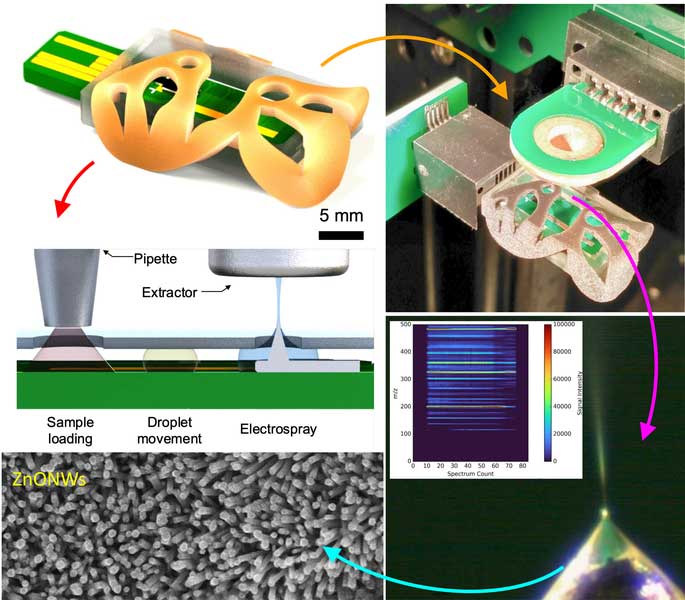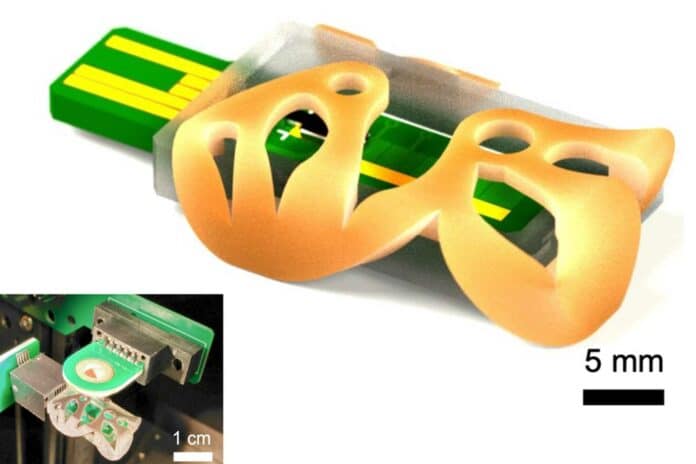Mass spectrometry precisely identifies a sample’s chemical composition, making it possible to track people’s health with long-term conditions. For instance, it can assess the hormone levels in a hypothyroid person’s blood.
Nevertheless, mass spectrometers might cost several hundred thousand dollars. As a result, these devices are typically found in laboratories, where blood samples must be delivered for examination. This ineffective method can complicate the management of chronic illnesses.
MIT‘s Microsystems Technology Laboratories (MTL) scientists want to make mass spectrometry local. For that to happen, the hardware must be inexpensive.
Scientists took a step forward toward this goal by 3D printing a low-cost ionizer. This miniature ionizer—only a few centimeters in size—performs twice as well as its state-of-the-art counterparts.
The device can be manufactured in batches and equipped with a mass spectrometer through effective pick-and-place robotic assembly methods. Going for 3D printing allows scientists to precisely control its shape and use unique materials to boost its performance.

Velásquez-García, the senior author of a paper on the ionizer, said, “This is a do-it-yourself approach to making an ionizer, but it is not a gimmick held together with duct tape or a poor man’s version of the device. It works better than devices made using expensive processes and specialized instruments, and anyone can be empowered to make it.”
Along with 3D printing, scientists did clever optimizations to produce a low-cost electrospray emitter that outperformed state-of-the-art mass spectrometry ionizer versions.
They used a process known as binder jetting, a form of 3D printing, to manufacture the emitter out of metal. This method builds the product one layer at a time by spreading a layer of powdered material and then spraying a unique polymer-based adhesive through tiny nozzles. Once completed, the object is heated up to dissolve the glue, and the surrounding powder is used to finish and solidify the sculpture.
Even if it sounds complicated, the process is one of the original 3D printing methods. It is exact and very effective.
After printing, the emitters undergo electropolishing to sharpen them. Then, zinc oxide nanowires are applied to every device. These nanowires provide the emitter with more porosity, which improves its ability to filter and move liquids.
Evaporation during operation is one possible problem that impacts electrospray emitters. It vaporizes the solvent and clogs the emitter, which is why engineers generally design the emitters to prevent evaporation.
In this study, scientists realized that they could use evaporation for their benefit. The emitters were designed as solid cones fed externally and angled precisely to take advantage of evaporation and strategically manage the liquid flow. This design ensures that a more significant percentage of charge-carrying molecules are present in the sample spray.
Scientists noticed that the evaporation can be a design knob that can help you optimize the performance.
Using the same binder jetting technique, they modified the counter-electrode, which provides voltage to the sample. By adjusting its size and form, they ensured it didn’t arc—a risky condition where electrical current jumps between electrodes. This innovation resulted in more ionized molecules and better performance, making it possible to apply greater voltages in a safer manner.
Moreover, they created an inexpensive printed circuit board that connects the emitter and has integrated digital microfluidics. Incorporating digital microfluidics improves the ionizer’s adequate transportation of liquid droplets.
These improvements produced an electrospray emitter that could run at a voltage that was 24% greater than earlier models. The signal-to-noise ratio more than doubled in performance due to this greater voltage.
Additionally, their scalable batch processing method can significantly lower each emitter’semitter’s cost. This development is an essential step toward realizing a low-cost point-of-care mass spectrometer.
Scientists are now looking forward to creating a prototype that combines their ionizer with their previously developed 3D-printed mass filter, as both are key components of their device. They also work to perfect 3D-printed vacuum pumps, which remain a significant hurdle to printing an entire compact mass spectrometer.
Journal Reference:
- Alex Kachkine and Luis Fernando Velásquez-García. High-Performance, Low-Cost, Additively Manufactured Electrospray Ion Sources for Mass Spectrometry. Journal of the American Association for Mass Spectrometry. DOI: 10.1021/jasms.3c00409
